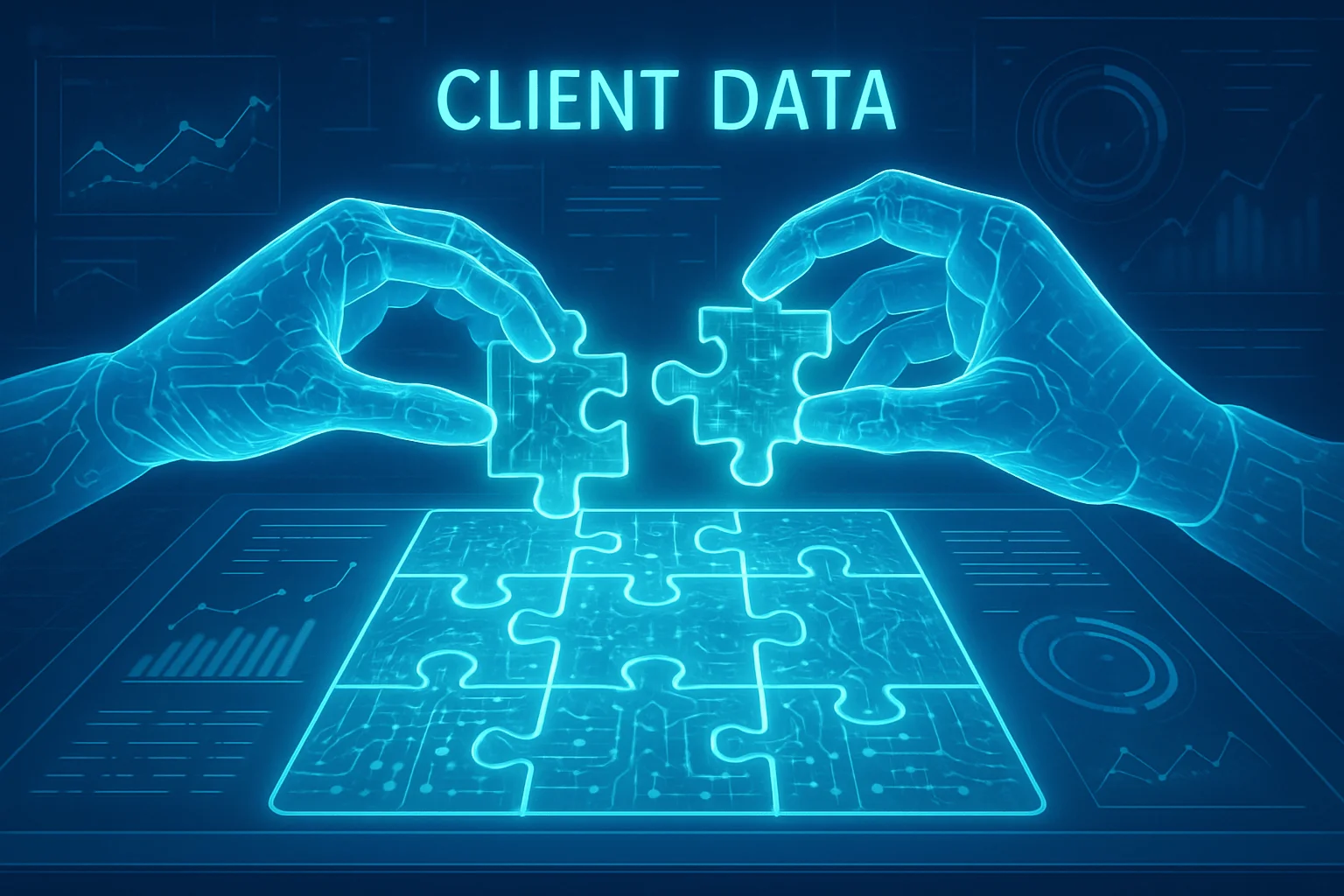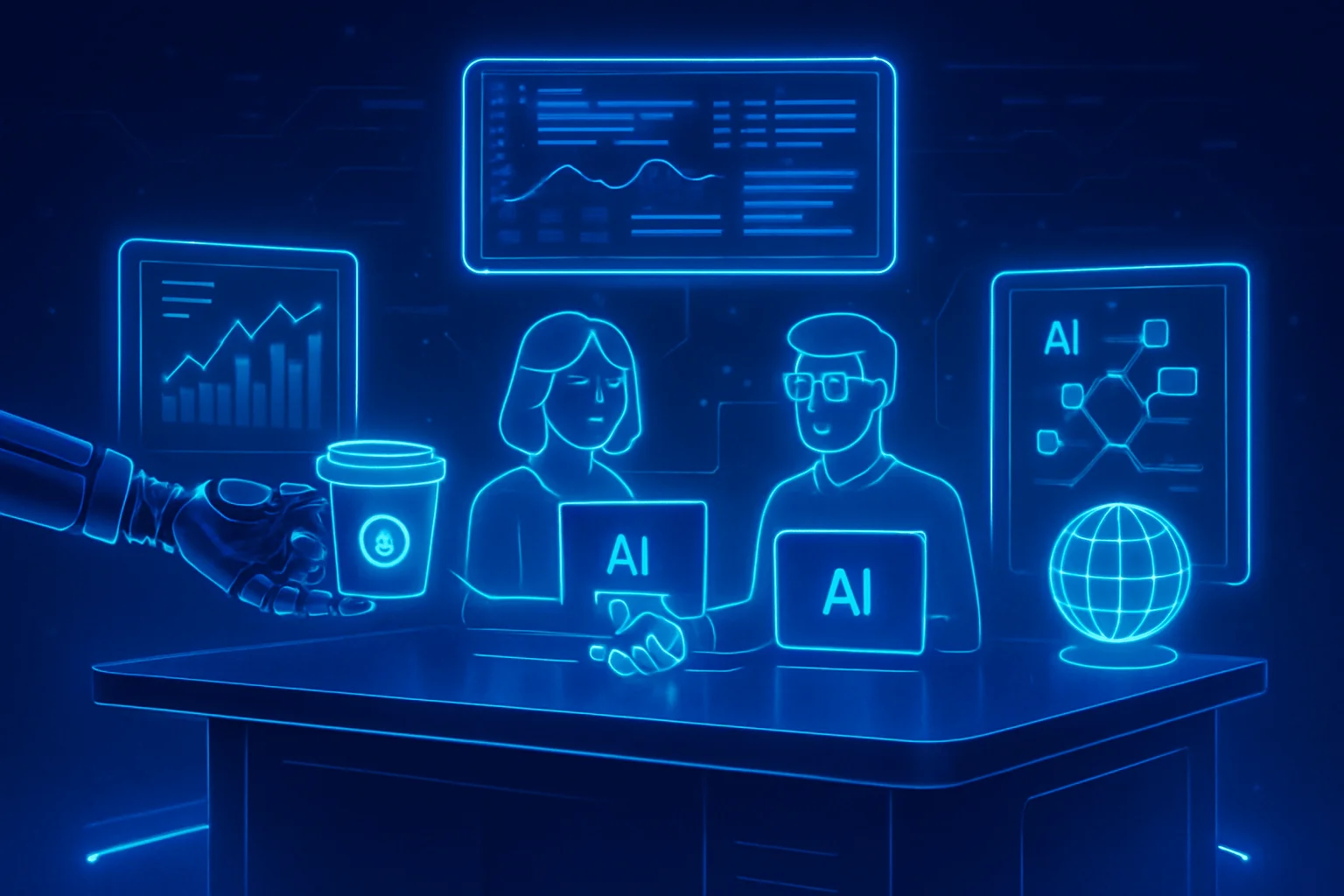Unlock Seamless Client Integration with AI Workflow Automation Tools

Imagine this: a promising new client fills out your onboarding form, and within minutes, they’re welcomed, briefed, and guided through your processes—no email ping-pong, no paperwork limbo, just smooth, professional engagement from day one. In an era where the speed and personalization of client interactions can make or break a business relationship, finding ways to streamline onboarding isn’t just a nice-to-have—it’s a competitive imperative. AI-powered workflow automation is revolutionizing this critical touchpoint, transforming tedious, manual steps into cohesive, intelligent experiences. In this article, you’ll discover how leveraging artificial intelligence can eliminate frustration on both sides, increase your team’s productivity, and pave the way for stronger, long-term client partnerships. We’ll explore the pain points of traditional onboarding, how AI-driven tools reimagine the process, and what practical strategies you can use to unlock these efficiencies—so you can focus less on busywork and more on building value.
The Challenge of Client Onboarding
Onboarding new clients can be a logistical nightmare. Between collecting vital information, managing endless paperwork, customizing communication, and ensuring timely follow-ups, manual workflows leave too much room for errors and delays. As businesses scale, this complexity only increases—making seamless client integration a serious productivity drain. By leveraging AI-powered workflow automation, you can eliminate bottlenecks, reduce human error, and deliver a far superior onboarding experience to your clients and your team.
1. Map Out and Digitize Your Onboarding Journey
Before automation, a clear and detailed map of your onboarding journey is essential. Identify every step, decision point, and necessary action—from the first contact to full integration.
Detailed Explanation:
Digitally visualizing your onboarding workflow helps reveal redundancies, gaps, and opportunities for AI automation. Use workflow mapping tools like Lucidchart, Miro, or even a basic flowchart in Google Drawings to plot out steps such as document collection, KYC checks, welcome package delivery, and personalized onboarding calls.
Real-World Example:
An accountancy firm found that manual info collection led to repeated requests for the same documents, frustrating clients. By mapping their onboarding journey, they discovered five unnecessary touchpoints that could be consolidated with smart forms and branched logic.
Pro Tip
Don’t assume your current process is flawless—shadow your team and interview recent clients to uncover hidden pain points.
Actionable Checklist:
- Chart every interaction from pre-sales to client activation.
- Note decision points where client input is required.
- Highlight tasks prone to delays or errors.
- List every document and data point currently gathered.
- Identify repetitive manual communications.
Practical Scenario:
A SaaS provider realized their welcome emails went out before accounts were actually set up, causing confusion. Digitizing the flow makes it easy to trigger communications precisely when milestones are achieved.
Pitfall to Avoid:
Don’t overcomplicate your workflow in the mapping stage; focus on actionable, critical steps only.
Reader Challenge:
Audit your last five client onboardings. How many repetitive or unnecessary steps can you remove?
2. Automate Data Collection and Validation Using AI
Manual data entry and collection is error-prone and time-consuming. AI workflow automation tools can dynamically request, collect, and verify client information, reducing human input—and mistakes.
Detailed Explanation:
Deploy AI-powered forms (e.g., Typeform with integrations, Cognito Forms) that request exactly what’s needed based on client responses. Use AI validation to check for completeness and accuracy, such as auto-verifying email domains, flagging mismatches, or extracting identity information from document uploads using optical character recognition (OCR).
Real-World Example:
A legal firm struggling with incorrect client data used AI bots that compared submitted information with public databases, flagging discrepancies before the onboarding progressed. This eliminated delays caused by legal document corrections.
Pro Tip
Integrate AI-driven forms directly with your CRM to ensure seamless, real-time updates and minimize duplicate entries.
Actionable Checklist:
- Replace static forms with adaptive AI-powered smart forms.
- Enable real-time document and ID validation.
- Set auto-reminders for incomplete submissions.
- Link data flows with your CRM/ERP via APIs.
- Build custom error notifications for incomplete or incorrect data.
Practical Scenario:
For a recruitment agency, AI forms that prompt for missing information (such as unsigned contracts) have reduced onboarding times by 25%.
Pitfall to Avoid:
Do not collect unnecessary personal data. Over-collection can lead to privacy issues and regulatory headaches.
Reader Challenge:
Review your current onboarding forms—could any information be gathered automatically or with fewer client touchpoints?
3. Orchestrate Personalized Communication Sequences with AI
Personal, timely communication is key in making clients feel valued, yet generic emails and misaligned touchpoints can alienate them. AI-powered automation platforms like HubSpot, ActiveCampaign, or Customer.io make it easy to create dynamic, triggered communication flows.
Detailed Explanation:
Use AI to segment clients by profile, industry, or need, and nurture them with auto-generated yet personalized emails, SMS, or in-app notifications. AI chatbots can field common onboarding queries instantly, freeing your staff for high-touch interactions.
Real-World Example:
A design agency segmented clients by industry and used AI-driven workflows to automatically send tailored onboarding resources, check-in emails, and customized project timelines, boosting early engagement scores by 40%.
Pro Tip
Couple AI communication tools with behavior-tracking—triggering follow-ups or support based on user activity, not just time-based automations.
Actionable Checklist:
- Build AI-driven email/SMS onboarding sequences.
- Create onboarding resource libraries that auto-send based on client segment.
- Deploy support chatbots for FAQs.
- Trigger proactive outreach based on inactivity or milestone completions.
- Automate scheduling for check-ins, webinars, or training.
Practical Scenario:
An education software provider saw onboarding completion rise when the AI detected stalled clients and dispatched timely, specific encouragement with tips targeted to their pain points.
Pitfall to Avoid:
Avoid relying solely on generic, one-size-fits-all communications. Over-automation can feel impersonal.
Reader Challenge:
Pick one client segment and map a personalized, trigger-based communication journey using your AI tool of choice.
4. Integrate e-Signature and Compliance Workflows
Clients often stall at the e-signature or compliance documentation stage. AI workflow tools such as DocuSign, PandaDoc, or Adobe Sign can automate these processes, ensuring nothing slips through the cracks.
Detailed Explanation:
Automatically generate, dispatch, and track e-signature requests, and set up AI monitors to verify completion and flag issues. Build compliance automations—such as auto-triggered background checks or license expirations—based on client data.
Real-World Example:
A real estate firm automated NDA signatures and anti-money laundering checks. If a client failed a check, AI instantly alerted onboarding staff, preventing time wasted on non-compliant prospects.
Pro Tip
Use AI-driven templating to prefill forms with verified client data, saving time and reducing manual errors.
Actionable Checklist:
- Integrate e-signature workflows with onboarding trigger points.
- Use AI to prepopulate forms from collected data.
- Set expiration reminders and auto-escalations for unsigned documents.
- Trigger compliance checks as soon as relevant data is received.
- Archive all signed documents centrally using AI-powered tagging.
Practical Scenario:
A fintech startup reduced onboarding drop-off by 60% by enabling mobile-friendly, guided AI e-signature experiences that tracked document progress and alerted the team of any holdups instantly.
Pitfall to Avoid:
Neglecting mobile compatibility or failing to set reminders for unsigned documents can halt your onboarding momentum.
Reader Challenge:
Set up a test onboarding flow where every document signature and compliance step is fully automated—track where it speeds up the process.
5. Monitor, Measure, and Optimize Your Automated Onboarding
Automation is not “set and forget.” Ongoing AI-powered monitoring and analytics are essential to refine processes and maximize productivity.
Detailed Explanation:
Utilize specialized dashboards (such as Airtable, Monday.com, or Asana with AI reporting plugins) to watch onboarding progress in real time. Set benchmarks for key SLAs like time-to-onboard, client satisfaction scores, or compliance rates. Use AI to surface trends, flag systematic delays, and suggest optimizations.
Real-World Example:
An HR consulting firm used AI analytics to discover certain steps consistently delayed onboarding. AI suggested remedial workflow tweaks, cutting average onboarding time from 14 days to 7.
Pro Tip
Feed your process analytics back into the workflow—have AI auto-suggest improvements or even auto-adjust timelines based on real-time performance data.
Actionable Checklist:
- Create real-time monitoring dashboards for onboarding steps.
- Set SLAs and automated alerting for lagging processes.
- Collect feedback via post-onboarding AI surveys.
- Automate reporting for leadership reviews.
- Establish a regular review cadence for process improvements.
Practical Scenario:
A marketing agency noticed a spike in onboarding delays every quarter-end. AI analytics uncovered a bottleneck in resource allocation, leading to proactive staff scheduling and a 50% improvement in throughput.
Pitfall to Avoid:
Ignoring your data—or failing to act on it—results in stagnant processes and missed improvement opportunities.
Reader Challenge:
Schedule a monthly onboarding metrics review. Identify one workflow tweak each month based on analytics insights.
Tips & Best Practices
- Build Cross-Functional Teams: Involve sales, operations, legal, and IT in designing your onboarding automations to catch blind spots and create a smooth handoff between departments.
- Prioritize Data Security: Ensure all AI and automation platforms are compliant with relevant data privacy laws (GDPR, HIPAA, etc.) to protect client data and boost trust.
- Test with Real Users: Run your onboarding automations with beta clients before a full rollout to catch usability snags and confusing language.
- Use Progressive Disclosure: Don’t overwhelm clients with information upfront. Let AI reveal steps and info requests contextually as needed.
- Maintain a Human Touch: Balance automation with periodic manual outreach to reassure clients and offer personalized support.
- Iterate Frequently: Treat onboarding as a living process; use AI insights and feedback to make continual small improvements.
- Automate Internal Notifications: Notify team members about onboarding milestones and issues, so manual intervention is always timely when needed.
FAQs
1. How do I select the right AI workflow automation tools for my onboarding process?
Answer:
Start by mapping your unique onboarding steps, then list requirements such as CRM integration, compliance needs, and preferred touchpoints (email, SMS, chat, etc.). Trial top solutions in your industry, and prioritize platforms with drag-and-drop workflow builders, robust API support, and proven AI data validation features.
Practical advice: Involve future end-users early, and run a live pilot with a single team or department before wider adoption.
2. How can I ensure that automated communications do not feel impersonal to clients?
Answer:
Leverage AI’s dynamic segmentation and content personalization capabilities—customize messaging based on industry, pain points, and behavior triggers. Supplement automated touchpoints with periodic personal check-ins by your team and always provide an easy way to ‘talk to a human’ at any stage.
Unique advice: Use AI to monitor engagement signals (like email opens or stalled forms) and trigger personal outreach when a client needs extra attention.
3. What’s the best way to measure ROI from automated onboarding processes?
Answer:
Track baseline metrics such as onboarding completion rate, time-to-value, manual staff hours saved, and client satisfaction scores. After implementing automation, compare these metrics monthly and use AI-driven analytics to surface under-the-radar efficiency gains, such as reduced error rates or faster compliance approvals.
Exclusive tip: Consider surveying clients post-onboarding to directly attribute satisfaction improvements to specific automation features.
Actionable Summary:
Take the reader challenge at each step and implement at least one best practice. You’ll quickly discover how AI-powered workflow automation transforms your client onboarding from a time sink into a true productivity engine.
Bringing AI-powered workflow automation into your client onboarding process isn’t just a tech upgrade—it’s your gateway to higher efficiency, consistent communication, and a positive first impression. We explored how mapping your journey, leveraging automation platforms, and prioritizing personalization can streamline tasks and free up valuable time. In today’s fast-paced landscape, delivering a seamless onboarding experience sets you apart and fuels long-term loyalty. Take a moment to assess your current process—is it ready for AI integration? Embracing these changes now can transform your productivity tomorrow. Let us know your thoughts or success stories in the comments, and don’t forget to subscribe for more insights to keep your business ahead of the curve!



